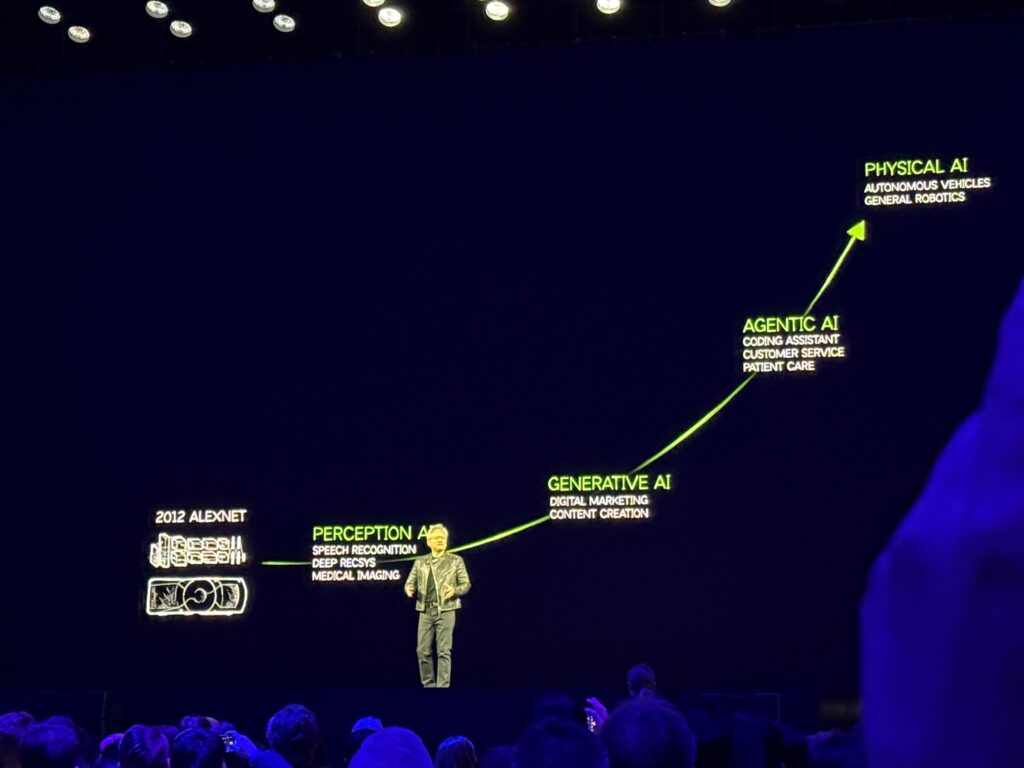At GTC 2025, Nvidia’s telecom chief told Fierce Network that AI is underhyped. CEO Jensen Huang expressed that this year was the Super Bowl of AI, where everyone is a winner. In other words, AI is huge, but “you ain’t seen nothing yet.” There may be a lot of merit to their words, given the impressive CPU showcase with CEO Jensen Huang’s keynotes – covering computational abilities, AI verticals, the trajectory of AI, Blackwell’s potential and robotics. Certainly, the computational and hardware abilities were shown in full strength, but are the AI use cases that require these computational abilities there yet, and have they proven themselves? This is where a gap still exists.
At MWC and GTC, the words “AI” or “AI-driven” or “Agentic AI” were ubiquitous, as if not having those terms on any branded materials would mean being left in the dust. As such, in 2023 and 2024, the hype around AI for mobile operators felt palpable and real. This year, it’s time to show the cards and deliver before disillusion begins to set in. How can mobile operators do that?

Jensen Huang, CEO of Nvidia, presenting at the conference keynote
The good: strong first internal use cases
Aspirations, creativity and motivation – the desire to find real-world applications for AI to enhance operations or customer experience is there. The big telecom organizations, like Verizon and AT&T, showcased their grand AI-related aspirations for the coming years. AT&T has set an ambitious goal of reducing costs by more than $3 billion by 2027, with GenAI designed to contribute to the results. They claimed a 2x in-year ROI in 2024 alone on their AI investments, predominantly for internal operational efficiency – including a 50 percent reduction in live human call handling in customer support and a 30 percent “boost of cell site sleeping” to save energy costs.
Similarly, Verizon is leveraging GenAI’s power to improve internal operations, from marketing content creation to sourcing and contracts to network planning, revealing their Centers of Excellence program for scaling GenAI.
While these implementations have proven impressive internally, the biggest potential for GenAI still looms large.
The challenge: delivering successful customer-facing AI applications
Despite the success of AI for internal use cases, AI’s biggest promise for mobile operators is to enhance customer experience with the goal of increasing NPS and monetizing, not just reducing costs. Gen Z will overtake baby boomers in spending and are expecting speed and personalization in their service interactions with operators. To increase customer satisfaction and consequently the ability to upsell, operators will need to meet their young consumers on these terms. GenAI is the conduit to help engage customers and deliver a better experience while also identifying the right opportunities to upsell.
Operators are exploring this option, but typically the aspiration is to deploy across the enterprise. This is where the challenge lies. Enterprise deployments are costly, tallying up a bill as high as $27 million. Mobile operators would be better served starting focused rather than adopting a strategy of a scaled, high-risk, high-reward implementation.
Solution: Start focused, get the right data, then scale up
Mobile operators must start with a laser-sharp focus by identifying the right use case and then scaling up once the it has proven itself successful. A use case objective can vary, from identifying how to increase customer satisfaction with device troubleshooting incidents to driving more retail traffic through the myOperator app. Starting with a focused, more attainable objective will allow organizations to minimize deployment costs and understand what kind of enhancements GenAI can deliver.
Second to choosing the right focused use case is the data readiness. The first requirement is deciding between a large language model (LLM) or small language model (SLM), depending on the kinds of tasks GenAI will need to accomplish. The other component is the contextual data of the customer, which means data from the customer’s mobile device itself. Access to this data sharpens the decision-making of a GenAI application, enabling it to convert interactions that typically yield low NPS into high-NPS – commercial opportunities. Once the data is prepared and the use case has proven itself fruitful, operators can then explore scaling up to address other areas of need in customer experience.
This is precisely how TELUS’s subsidiary Mobile Klinik (MK) started on their customer-facing GenAI journey and proved its success before expanding. In partnership with MCE, TELUS MK deployed GenAI into their mobile app customer journey with two clear and simple objectives: a) increase marketing promo interactions in the app and b) drive more retail intent. By starting with one focused objective on a single customer journey, accessing the right data with MCE’s mobile device intelligence-capturing technology and leveraging an appropriate LLM, the pilot achieved clear, quantifiable and marked results. The pilot’s success led to the expansion of GenAI from one customer journey to exploring others.
Pioneering GenAI for Mobile Operators
MCE is the pioneer for customer-facing GenAI applications in the industry with real-world results on the market. This is the kind of approach mobile operators must take: identify the right, niche use case and then expand and acquire the right data. MCE’s digital device lifecycle management (dDLM) platform and DeviceAI + GenAI solution allow mobile operators to achieve just that.



